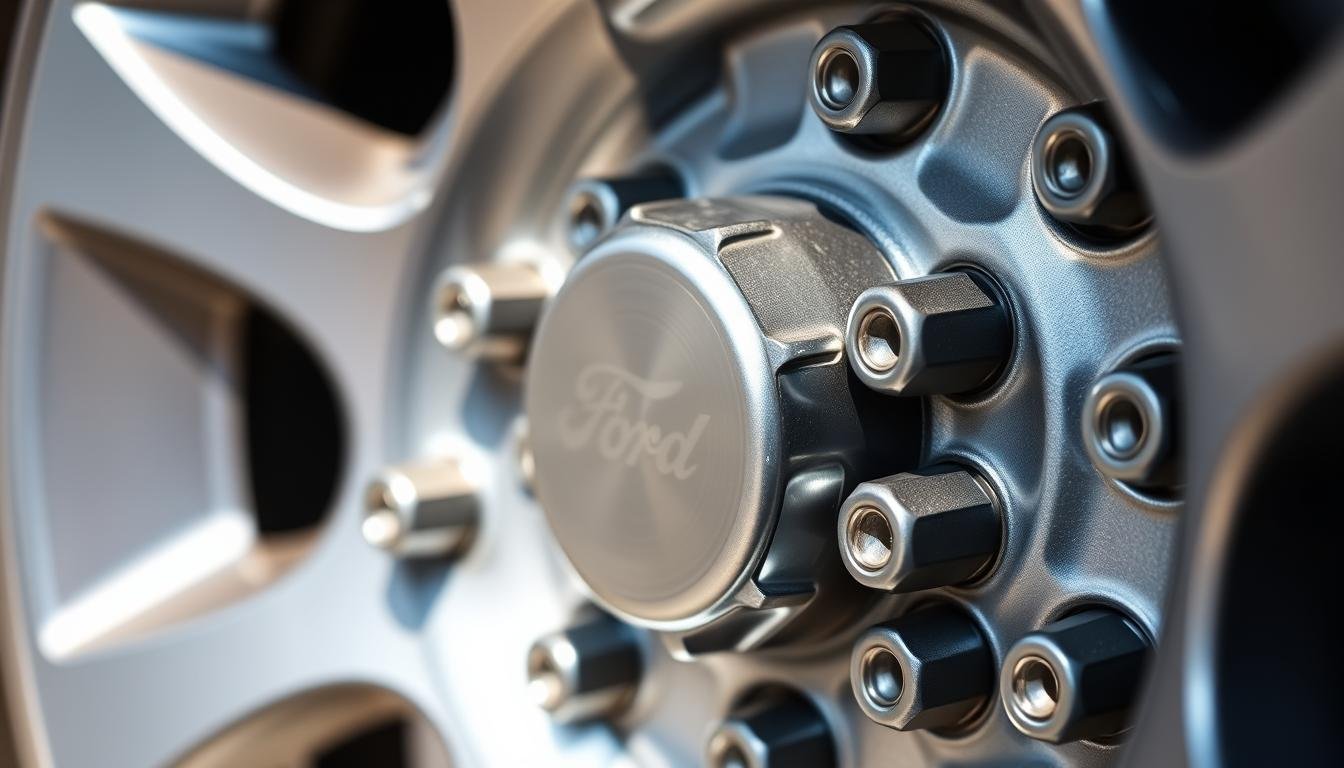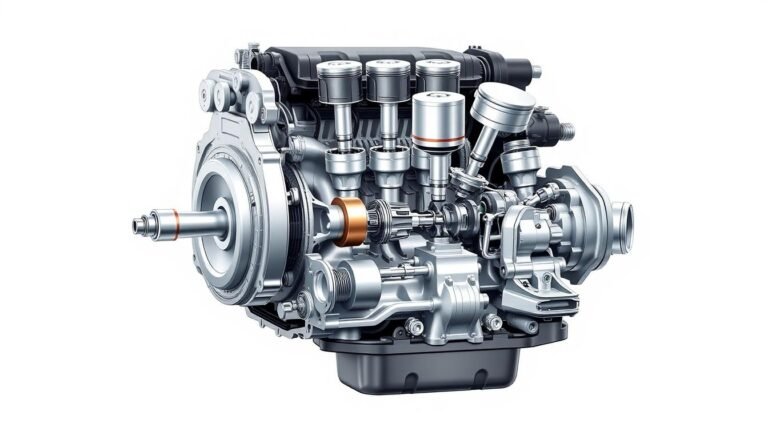Ford F150 Lug Pattern Guide For Perfect Fit Wheels
Wondering about the Ford F150 lug pattern? It often comes in a 6x135mm setup, crucial for the right wheel fit.
Knowing this pattern is key when changing your wheels. It impacts your truck’s look and how it drives.
This guide will detail the Ford F150 lug pattern, giving you specs and tips to avoid mistakes during wheel changes.
We’ll show you how to ensure wheels fit your truck and explain the right lug nut size. You’ll also find ways to fix common issues that come up.
Whether you want a new look or need to change old wheels, this guide has you covered. Ready to get started?
Introduction To The Ford F150 Lug Pattern
If you own an F150 and want to upgrade or customize your truck, knowing the ford f150 lug pattern is key. Making sure your wheels fit right is not just about looks.
It also affects your truck’s performance. Changing wheels is a fun way to make your vehicle your own and boost its abilities.
The lug pattern plays a big role in finding wheels that fit and keeping your truck safe.
Choosing the right wheels that match the ford f150 lug pattern makes your truck look better.
It also makes sure you have a smooth and safe ride. Always consider this important detail when looking at customization choices.
What Is The Ford F150 Lug Pattern?
The Ford F150 lug pattern is very important for matching wheels with your truck. If your F150 was made from 2004 to the present, it has a 6x135mm pattern.
This means there are six bolts arranged in a circle measuring 135mm across. However, F150s made from 1997 to 2003 have a pattern of 5x135mm.
Knowing the differences between these patterns is key when you’re picking out new wheels. Each pattern comes with specific lug nut specifications.
Newer F150 models use lug nuts that are 14mm x 2.0. But, the older ones need 12mm x 1.75 size lug nuts.
The hole in the center of the wheel, or center bore, is 87.1mm across for a perfect fit.
Current and Previous Generations: Year-by-Year Breakdown
Getting to know the year breakdown of Ford F150 specs helps in picking the right wheels. It lays out the differences between each generation clearly.
With this info, you’re equipped to match your vehicle with compatible, high-performing wheels.
2004-Present F150 Specifications
From 2004 onwards, F150 models boast a strong 6x135mm bolt pattern. This detail is key for a secure wheel fit.
These newer models come with specifics such as:
- Center Bore: 87.1mm
- Lug Nut Size: 14mm x 2.0
- Recommended Torque: 150 ft-lbs
1997-2003 F150 Specifications
The trucks made between 1997 and 2003 have their own spec sheet. They use a 5x135mm bolt pattern, with different key measurements including:
- Center Bore: 87.1mm
- Lug Nut Size: 12mm x 1.75
- Recommended Torque: 100 ft-lbs
What is The Ford F150 Wheel Bolt Pattern?
The ford f150 wheel bolt pattern is crucial for making sure the wheels fit right. For models from 2004 to now, it uses a 6x135mm setup.
This means the wheel has six holes spread out over a circle that measures 135mm across.
Knowing this pattern is key to avoid buying the wrong wheels, which can cause safety and performance issues.
For F150s made from 1997 to 2003, the pattern is different, at 5x135mm. It’s very important to recognize this when looking for used wheels.
This ensures a correct fit and keeps you safe on the road.
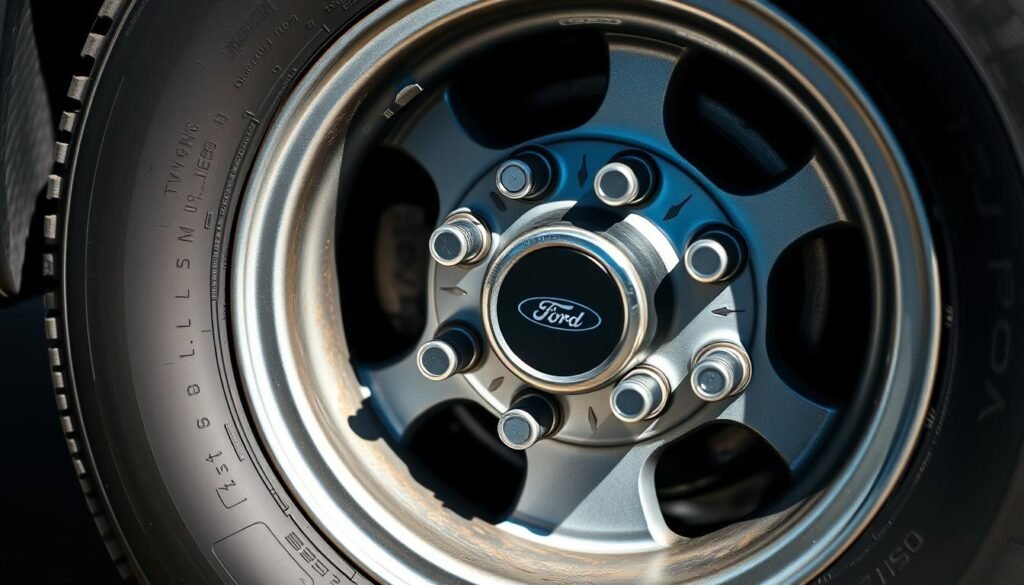
How To Check If Wheels Will Fit Your F150?
Checking if new wheels fit your Ford F150 needs careful steps. You must measure accurately and follow a checklist to avoid mistakes.
Mistakes like wheel rubbing can affect your truck’s performance and safety. Here’s a detailed guide to help you check wheel compatibility.
Complete Measurement Checklist
- Wheel Offset: Measure the wheel offset. An optimal range for the Ford F150 is between +30mm to +44mm.
- Center Bore: Verify that the center bore is at least 87.1mm to ensure proper fitment on the hub.
- Load Rating: Confirm the load rating for both wheels and tires, ensuring they meet or exceed the OEM specifications for safe operation.
- Wheel Width: Check the width of the wheels against the manufacturer’s recommendations for ford f150 wheel compatibility.
- Tire Size: Ensure that the tires match with the selected wheels, aligning with your F150’s specifications.
By carefully following this checklist, you make sure your wheels fit just right. This keeps your F150 safe and fun to drive.
Optimal Wheel Offset For Ford F150
The ford f150 optimal wheel offset greatly affects function and style. Getting the right offset is key for better performance and looks.
For most models, a +30mm to +44mm offset is best. This makes sure the wheels fit well with the fenders and suspension. It helps keep the ride stable and comfortable.
The impact of wheel offset on wheel performance includes handling and steering. A good offset enhances cornering, making the truck follow your commands better.
Plus, the right offset adds to the truck’s look, making it seem tougher. Yet, it does this without harming safety or performance.
When picking wheels, think about your F150’s specific make. Different years and models might need different wheels. Always check your truck’s specs to find the best wheels.
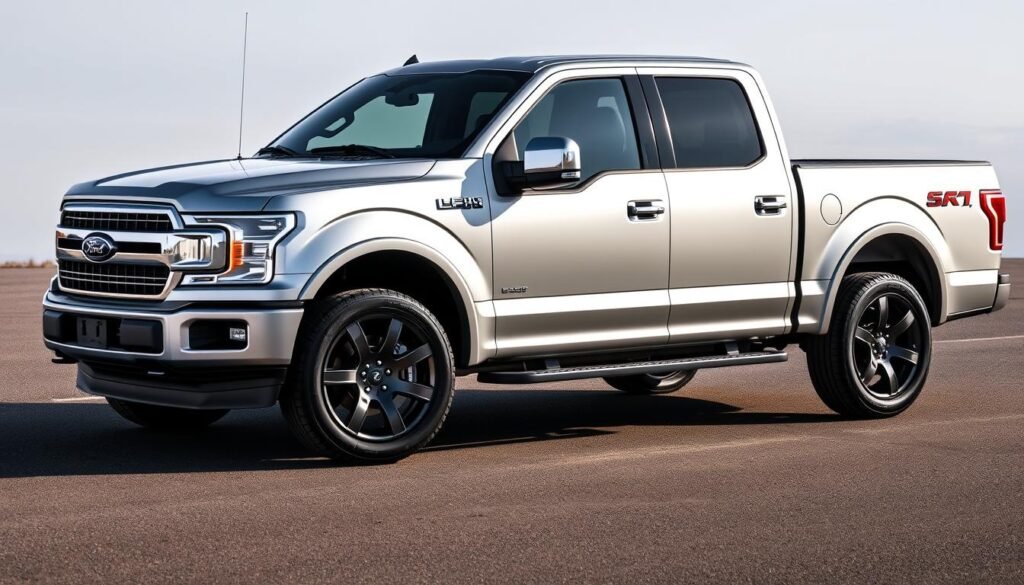
Essential Lug Nut Size and Pattern Guide
Picking the right ford f150 lug nut size is key for your car’s safety and function. The standard lug nut size for models from 2004 and later is 14mm x 2.0.
But, older Ford F150 models mostly have a 12mm x 1.75 size. Knowing your lug nut size helps keep your wheels tightly on, avoiding accidents or damage from wheels that might come loose.
The ford f150 lug nut pattern is also crucial, telling if the nut is conical or flat. The type of nut seating affects how well the wheels fit on the axles.
Conical nuts usually hold onto factory wheels better, while flat nuts might be best for some aftermarket wheels.
Choosing the wrong type of lug nut can cause them to loosen or make the ride shaky.
Remember to always check your lug nut specs and patterns before you change any wheels. Doing this helps your wheels last longer and keeps your driving safe.
Common Wheel Fitment Problems and Solutions
Putting new wheels on your Ford F150 brings up several common issues. Knowing what these are is key for a smooth and safe ride.
Fixing these issues quickly saves you money on repairs and keeps your ride in top shape. Here’s a look at common troubles and how to fix them for your F150.
Issues with Offset
Choosing the right wheels often means paying attention to offset. If the offset isn’t right, your wheels may rub against parts of the truck, especially if it’s lifted.
To keep this from happening:
- Figure out the right offset range for your F150 model.
- Pick wheels that follow the recommended offset guides.
- If you’re going for wheels with a different offset, think about an adjustable spacer.
Lug Nut Seating Concerns
Lug nut fit is another common issue. If they don’t fit right, it causes uneven wear and safety problems.
To fix this, make sure to:
- Pick the right lug nuts for your wheel’s surface.
- Stick to the torque settings recommended by the maker.
- Check your lug nuts often to spot any that might be getting loose.
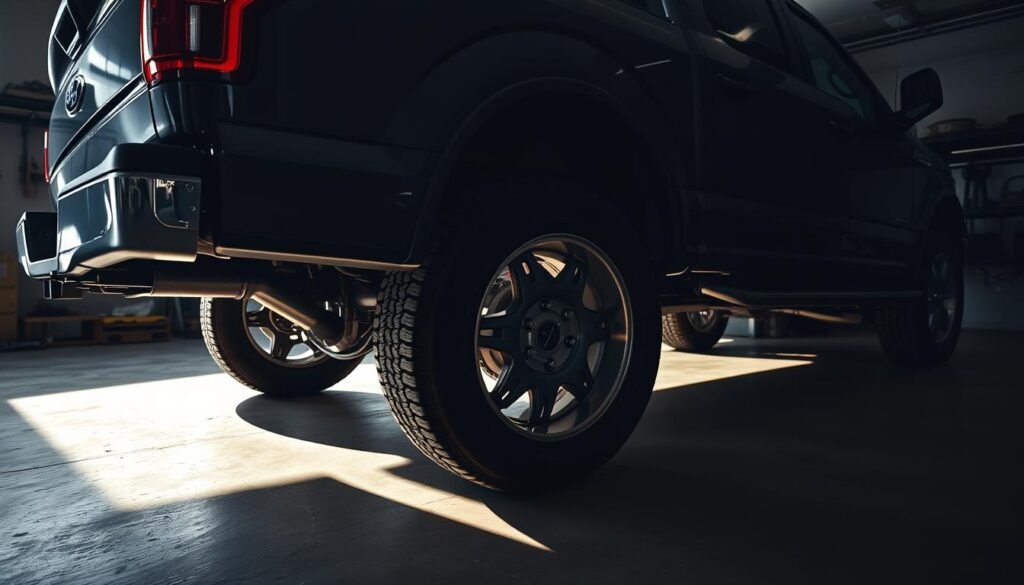
Load Rating Considerations For F150 Wheels
When you pick wheels for your Ford F150, don’t ignore the load rating. Each wheel must handle at least 3,150 lbs safely.
This keeps the wheels strong and makes sure your ride is safe. Check the specs for both the wheel and tire when you’re buying new ones.
This avoids issues from changes like lift kits, which can change how the wheels carry weight.
Sticking to the right load ratings means your wheels will last longer and stay safe while you drive.
Here’s a table highlighting important specifications for commonly used wheels on the Ford F150:
| Wheel Type | Load Rating (lbs) | Recommended Tire Pressure (psi) |
|---|---|---|
| Standard Alloy | 3,150 | 35 |
| Heavy-Duty Steel | 3,500 | 40 |
| Aftermarket Off-Road | 3,200 | 35 |
Always check your wheel and tire specs before buying. This ensures your Ford F150 can handle what you throw at it.
Knowing about load ratings helps you make smart choices, keeping your vehicle safe and reliable for all your adventures.
How To Set The Right Torque For Your Ford F150?
Getting the torque right when you put on your Ford F150’s wheels is crucial. It’s for both safety and how well your truck drives.
Your truck needs a certain ford f150 lug nut torque: 150 ft-lbs for models from 2004 and up, and 100 ft-lbs before that, from 1997-2003.
Use a reliable torque wrench to reach this torque. Here’s how:
- Make sure the car is parked on level ground and the lug nuts are clean.
- Adjust the torque wrench to your truck model’s needed setting.
- Tighten each lug nut in a star pattern to spread the pressure evenly.
- Double-check each lug nut to make sure the torque is still right.
- After driving 50 to 100 miles, check and adjust the lug nuts’ torque again.
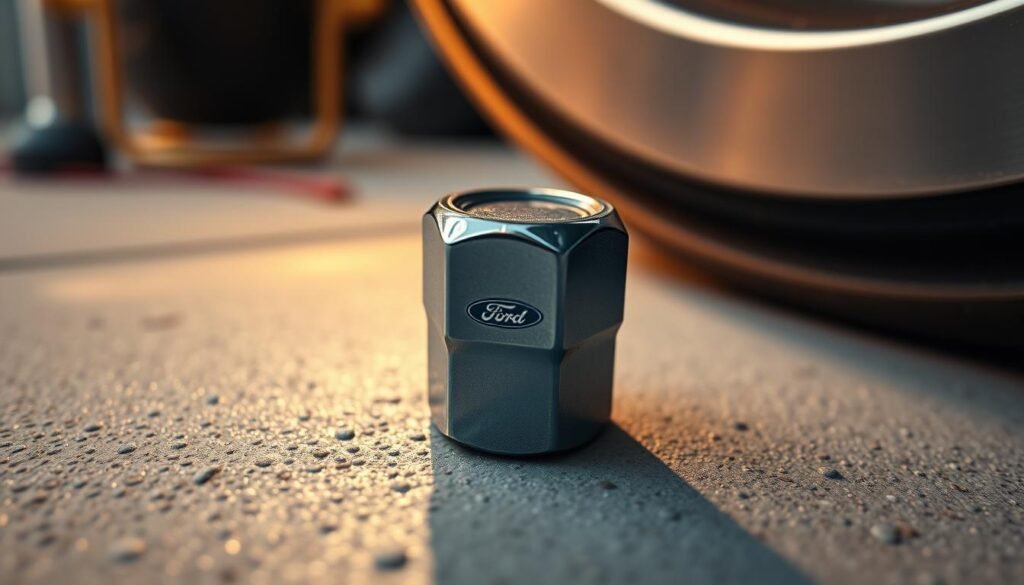
Doing these steps is key for your truck’s safety and how well it works. Monitoring the ford f150 lug nut torque helps prevent problems while driving. It also keeps your wheels and tires lasting longer.
Comparing Aftermarket Wheels with Factory Options
Choosing between ford f150 aftermarket wheels and factory wheels can affect your Ford F150’s looks and how it drives.
Every owner should think about the pros and cons of each when getting new wheels. Cost Efficiency: Initially, factory wheels are cheaper.
But, ford f150 aftermarket wheels may offer better value over time. They could last longer and let you customize, possibly boosting your vehicle’s performance.
Customization: Aftermarket wheels come in many styles, colors, and finishes. This lets you make your F150 your own.
On the other hand, factory wheels have fewer design options. This makes aftermarket wheels appealing for those wanting to stand out.
Weight Considerations: Aftermarket wheels often weigh less, which might improve gas mileage and handling.
But, factory wheels are made to perfectly match your vehicle. This means they provide the best balance and performance.
Compatibility: Be mindful that aftermarket wheels might not fit your vehicle perfectly. Always check that ford f150 aftermarket wheels fit your model and year.
Factory wheels, however, are guaranteed to fit well and work right. Considering these points will help you choose what’s best for you.
Whether it’s cost, style, or performance that matters most, making a smart choice means your upgrade matches your vision for your Ford F150.
Conclusion
Knowing the Ford F150 lug pattern is important for the right wheel fit and better truck performance.
Getting the measurements right improves safety and makes your truck look good. Follow the specs in this guide to avoid common fitment problems and customize your truck the right way.
When picking new wheels or changing old ones, consider load capacity and proper torque settings.
This knowledge lets you choose wisely, enhancing driving and extending your vehicle’s life.
With the detailed guide on Ford F150 wheel fitment, you’re ready for your next customization task.
FAQs
Q: What is the lug pattern for a 2020 Ford F150?
A: The lug pattern for a 2020 Ford F150 is 6x135mm.
Q: How do I measure the lug nut size for my Ford F150?
A: For Ford F150s from 2004 and later, the lug nut size is 14mm x 2.0. For models from 1997 to 2003, it measures 12mm x 1.75.
Q: How can I check if my aftermarket wheels fit my Ford F150?
A: To ensure fitment, check the bolt pattern and the center bore size, which should be 87.1mm or more. Also, confirm that the offset fits within the +30mm to +44mm range.
Q: What happens if I use the wrong lug nut seating type?
A: The wrong lug nut seating type, either conical or flat, can lead to wheels not fastening correctly. This might cause your wheels to loosen or your car to vibrate while driving.
Q: What is the torque specification for lug nuts on a 2019 Ford F150?
A: The lug nuts on a 2019 Ford F150 should be torqued to 150 ft-lbs.
Q: Why is knowing the wheel load rating important?
A: It’s important because each wheel must bear the vehicle’s weight for safety. This is especially crucial if the vehicle has been modified, like with a lift kit. The minimum load rating should be 3,150 lbs.
Q: Are there any clearance issues with lifted Ford F150 models?
A: Yes, lifted F150s might rub if the offset isn’t right. Choosing the correct offset and wheel size is key to avoiding this issue.

